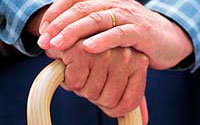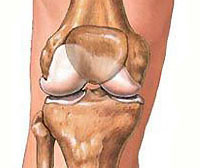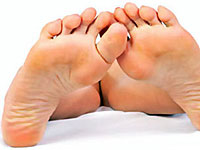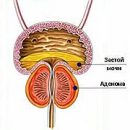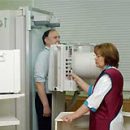Rheumatism - the total disease of an infectious-allergic nature, in which the connecting tissue is affected, mainly the cardiovascular system, as well as joints, internal organs, central nervous system.
Content
It is believed that the cause of rheumatism is activation
pathogenic microorganisms, mainly beta hemolytic
Streptococcus group A. It is he who is given the main role in etiology and
pathogenesis of rheumatic disease. First, the disease develops on
Background of streptococcal infection. Secondly, in the blood of patients
There is a large number of antibodies to the microorganisms of this
Groups. Thirdly, the prevention of the disease is successfully held
Antibacterial drugs. So we found out the reason for this
Cunning disease.
pathogenic microorganisms, mainly beta hemolytic
Streptococcus group A. It is he who is given the main role in etiology and
pathogenesis of rheumatic disease. First, the disease develops on
Background of streptococcal infection. Secondly, in the blood of patients
There is a large number of antibodies to the microorganisms of this
Groups. Thirdly, the prevention of the disease is successfully held
Antibacterial drugs. So we found out the reason for this
Cunning disease.
Now consider what is happening in the body
man. For example, a man had a sorry, that is, subjected
Streptococcal infection. Normally, a person is produced
Sustainable immunity to the antigens of this microorganism. But if protective
the forces of the body are reduced, then such immunity is not created. At
Re-introduction of streptococci in the body arises complex immune
answer. As a result of autoimmune reactions, damage occurs
own connective tissue.
man. For example, a man had a sorry, that is, subjected
Streptococcal infection. Normally, a person is produced
Sustainable immunity to the antigens of this microorganism. But if protective
the forces of the body are reduced, then such immunity is not created. At
Re-introduction of streptococci in the body arises complex immune
answer. As a result of autoimmune reactions, damage occurs
own connective tissue.
Clinical manifestations are diverse.
Usually rheumatism develops after 1-2 weeks after transferred
Streptococcal infection (for example, angina, scarletins, pharyngitis).
Patients complain about temperatures up to 37.5, poor general
Wellness (weakness, sweating). Later new signs appear,
pointing. These include the feeling of interruptions in
Heart work, heartbeat, feeling of chest, shortness of breath. Everything
These phenomena are associated with the development of myocarditis.
In addition, joint pain appear (but not always). In case of inspection
The patient can be detected rash in the form of pale pink rings,
towering over skin. When palpation they are painless. Localize
Such rings are mainly on the skin of the chest, abdomen, neck, faces. Wherein
Pale skin.
Usually rheumatism develops after 1-2 weeks after transferred
Streptococcal infection (for example, angina, scarletins, pharyngitis).
Patients complain about temperatures up to 37.5, poor general
Wellness (weakness, sweating). Later new signs appear,
pointing. These include the feeling of interruptions in
Heart work, heartbeat, feeling of chest, shortness of breath. Everything
These phenomena are associated with the development of myocarditis.
In addition, joint pain appear (but not always). In case of inspection
The patient can be detected rash in the form of pale pink rings,
towering over skin. When palpation they are painless. Localize
Such rings are mainly on the skin of the chest, abdomen, neck, faces. Wherein
Pale skin.
Treatment of rheumatism
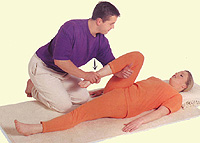
Depending on the flow, three
The degree of activity of the disease: the most active (acute), moderately
Active and with minimal activity (sluggishly current). For illness
are characterized by recurrences (resumption of acute process) under the influence
adverse factors (infection, hypothermia, physical
Overvoltage and pr.)
The complications of rheumatism include the following severe conditions: endocarditis,
Tricetic overlays on valves can be broken and spread
Current of blood in various organs and fabrics, causing severe disorders
blood circulation (ischemia) and, as a result of heart attacks (for example, infarction
kidneys, spleen and others.). Severe course of the disease can lead to
Rheumatic pericarditis.
Tricetic overlays on valves can be broken and spread
Current of blood in various organs and fabrics, causing severe disorders
blood circulation (ischemia) and, as a result of heart attacks (for example, infarction
kidneys, spleen and others.). Severe course of the disease can lead to
Rheumatic pericarditis.
If the patient enters the active phase of rheumatism, he is sent
for hospital treatment. As the main etiological factor
rheumatic disease is streptococcus, then the treatment is directed to
Fighting with infection, as well as with inflammatory processes caused by
These microorganisms.
for hospital treatment. As the main etiological factor
rheumatic disease is streptococcus, then the treatment is directed to
Fighting with infection, as well as with inflammatory processes caused by
These microorganisms.
Antibacterial therapy is prescribed to fight streptococcal infection.
Most often use the following treatment scheme:
- Penicillin at 400,000 units 4 times a day introduced intramuscular (course of treatment 10 days)
- Then Bicyllin-5 is introduced (this is also an antibiotic) of 1,500,000 ... once every 3 weeks (rate of treatment 1.5-2 months)
- After that it is necessary to carry out year-round bicyllinoprophylaxis under the control of the doctor
To suppress the inflammatory process, the doctor prescribes nonsteroidal
Anti-inflammatory means. For example, diclofenac sodium (Ortophen,
Voltaren), indomethacin, acetylsalicylic acid.
Anti-inflammatory means. For example, diclofenac sodium (Ortophen,
Voltaren), indomethacin, acetylsalicylic acid.
If the patient has a high
The activity of autoimmune processes is prescribed immunosuppressive
Therapy (overwhelming immune processes aimed at damage
own tissues of the body). For this purpose, corticosteroid
Preparations (prednisone). If the activity of autoimmune processes
Small, then the appointment of aminohinoline derivatives is possible
(Plaquenil, delagil).
The activity of autoimmune processes is prescribed immunosuppressive
Therapy (overwhelming immune processes aimed at damage
own tissues of the body). For this purpose, corticosteroid
Preparations (prednisone). If the activity of autoimmune processes
Small, then the appointment of aminohinoline derivatives is possible
(Plaquenil, delagil).
After discharge from the hospital, the patient
must be observed in a cardiorevmatology office, with a view to
identifying complications or their prevention, if any.
must be observed in a cardiorevmatology office, with a view to
identifying complications or their prevention, if any.



